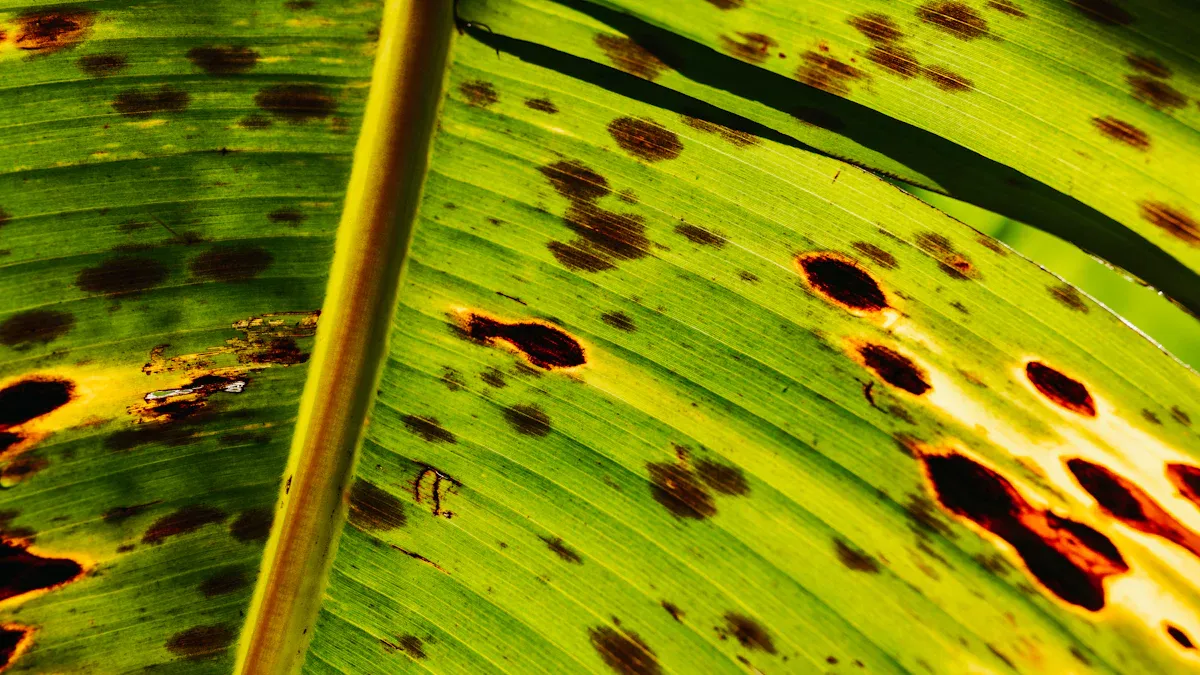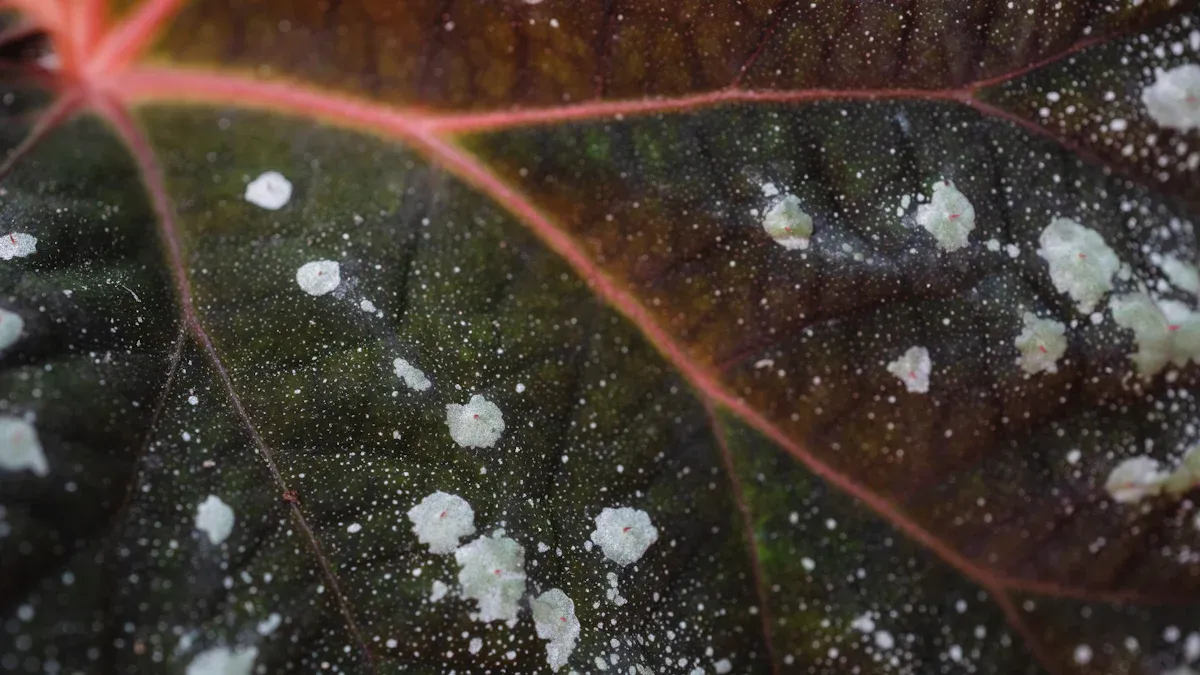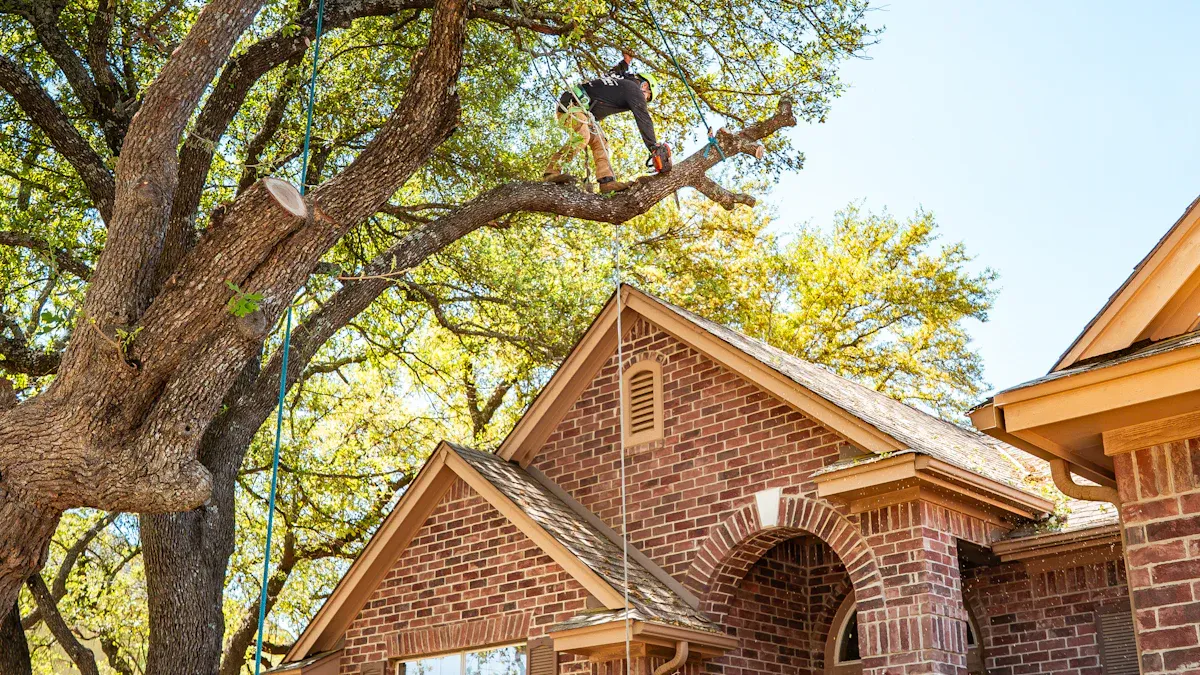
Recognizing Chinese Elm tree diseases is crucial for maintaining the health of your tree. Early detection of these diseases can prevent severe damage and improve treatment options. Many tree owners face challenges such as identifying symptoms of Chinese Elm tree diseases and choosing appropriate treatments. Common concerns include:
Waiting too long to act on Chinese Elm tree diseases, which limits treatment options.
Understanding the signs of Chinese Elm tree diseases to ensure timely intervention.
Finding effective strategies for managing tree health in the face of Chinese Elm tree diseases.
By staying vigilant, you can help your tree thrive and reduce the risk of serious issues related to Chinese Elm tree diseases.
Key Takeaways
Early detection of Chinese Elm tree diseases is vital. Look for symptoms like yellowing leaves and wilting branches to act quickly.
Regularly inspect your trees for signs of diseases such as Dutch Elm Disease and Anthracnose. Prompt action can save your tree from severe damage.
Implement proper sanitation practices. Remove dead or diseased trees to prevent the spread of diseases among healthy trees.
Consider both chemical and organic treatments for managing tree diseases. Choose methods that suit your gardening style and environmental concerns.
Maintain good air circulation around your trees to prevent issues like Powdery Mildew. Proper watering and spacing can help keep your trees healthy.
Chinese Elm Tree Diseases
Dutch Elm Disease
Dutch Elm Disease poses a significant threat to your Chinese Elm trees. This disease is caused by a fungus that spreads through beetles and contaminated tools. You can identify it by several key symptoms:
Leaves on infected branches turn yellow, wilt, and eventually brown.
Fallen leaves scatter across your lawn during spring or summer.
Symptoms often first appear in late spring and early summer but can occur at any time during the growing season.
Yellowing and wilting of leaves progress down the infected branch towards the trunk.
If you remove the bark, you may notice brown streaking along the sapwood of wilted branches.
As the vascular system of the tree becomes clogged, it prevents water and nutrient flow. This blockage leads to characteristic “flagging” of solitary upper branches, where leaves wilt, curl, and drop off. If left untreated, Dutch Elm Disease can lead to the death of your tree.
Anthracnose
Chinese Elm Anthracnose is another prevalent disease that affects your trees. This fungal infection thrives in cool, moist conditions. Here are some symptoms to watch for:
Irregular black spots appear on leaves.
You may notice premature leaf drop and twig dieback.
Cankers can form on limbs and the trunk, which may lead to tree girdling and death, especially in coastal areas.
To manage this disease, remove leaf debris and prune infected branches. Planting less susceptible cultivars can also help reduce the risk of infection.
Powdery Mildew
Powdery Mildew is a fungal disease that can affect your Chinese Elm trees, especially during warm, dry weather. You can recognize it by:
A white, powdery coating on leaves and stems.
Leaves may become distorted and yellow as the disease progresses.
While Powdery Mildew is rarely fatal, it can weaken your tree and reduce its overall vigor. To manage this disease, ensure proper air circulation around your trees and consider applying fungicides if the infection is severe.
Sooty Mold
Sooty Mold is not a disease that directly infects your Chinese Elm tree. Instead, it grows on the honeydew excreted by aphids and other sap-sucking insects. You can identify Sooty Mold by:
A black, sooty coating on leaves and branches.
Reduced photosynthesis, which can lead to weakened trees.
To manage Sooty Mold, control the insect populations that produce honeydew. You can use insecticidal soaps or natural predators to keep these pests in check.
By recognizing these common Chinese Elm tree diseases and their symptoms, you can take proactive steps to protect your trees and ensure their health.
Identifying Symptoms

Flagging and Leaf Drop
When you notice flagging and leaf drop in your Chinese Elm tree, it often signals a problem. Flagging refers to the wilting and curling of leaves on specific branches. This symptom usually indicates that the tree struggles to transport water and nutrients. You might see leaves turning yellow before they drop off. If you observe this, act quickly. Early intervention can save your tree from severe damage.
Leaf drop can occur for various reasons. Environmental stress, such as drought or excessive moisture, can cause leaves to fall prematurely. However, if you notice leaf drop accompanied by wilting, it may indicate a disease like Dutch Elm Disease. Keep an eye out for these signs, as they can help you identify issues before they escalate.
Fungal Infections
Fungal infections are common in Chinese Elm trees and can lead to significant health problems. You can recognize these infections by specific visual indicators. For example, Anthracnose causes large black spots on leaves, cankers near the base of the tree, and branches dying back from their tips. These symptoms can weaken your tree and reduce its overall vigor.
Here’s a quick overview of some common fungal infections affecting Chinese Elm trees:
Fungal Infection | Description |
|---|---|
Dutch Elm Disease | Generally, Chinese elms are resistant but can still be affected. |
Phloem Necrosis | Affects elms, including Chinese elms, and is transmitted by the elm leafhopper. |
If you notice any of these symptoms, take action immediately. Removing infected branches and maintaining proper sanitation can help manage these diseases. Remember, early intervention is key to preserving the health of your tree.
Management and Prevention

Managing and preventing diseases in your Chinese Elm trees is essential for maintaining tree health. By implementing effective strategies, you can protect your trees from common diseases and ensure their longevity.
Chemical Treatments
Chemical treatments can play a vital role in controlling diseases like Dutch Elm Disease. Here are some effective options:
Treatment | Application Rate | Notes |
|---|---|---|
Alamo | 6 to 10 ml per injection site per inch DBH | Concerns about phytotoxicity to cambium. Group 3 fungicide. |
Arbotect 20-S | 1 to 2 fl oz/5 inches DBH annually | Effective as preventative and therapeutic. 0-hr reentry. |
Fungisol | Variable results, specific to Washington and Idaho | 0-hr reentry. |
Propizol | Refer to label for details | Group 3 fungicide. 24-hr reentry. |
Shepherd | 5 to 10 ml per injection site per 3 to 5 inches circumference | Group 3 fungicide. |
When using chemical treatments, always follow the manufacturer’s instructions. If you notice severe symptoms, remove infected trees promptly. Peel the bark off the stump to below the soil line. Burn or bury all wood greater than 1/2″ in diameter to eliminate bark beetle larvae. If less than 5% of the crown shows symptoms, prune the branch at least 12 feet below the vascular streaking point. Injecting a fungicide can also help control the disease.
Organic Solutions
Organic solutions offer a more natural approach to managing tree diseases. Here are some recommended methods for controlling issues like Powdery Mildew and Sooty Mold:
Use biological sprays such as Bacillus pumilis, Bacillus subtilis, and Streptomyces lydicus to enhance biological competition.
Apply sulfur products (wettable sulfur, lime sulfur, sulfur dust) for their effectiveness and low resistance development.
Utilize sterilizing products like Zerotol, Hydrogen Peroxide, and Potassium bicarbonate for aggressive control of Powdery Mildew.
Consider vegetable oils (e.g., sunflower oil) to reduce spore germination and control Powdery Mildew.
Other plant oils such as thyme oil and neem oil can also suppress Powdery Mildew.
Organic tree care emphasizes natural methods without synthetic chemicals. This approach can be better for your trees and the environment. While it requires some knowledge and practice, it can effectively manage Sooty Mold by addressing the underlying health of the tree.
Proper Sanitation
Proper sanitation practices are crucial in preventing disease spread among your Chinese Elm trees. Here are some effective practices to follow:
Practice Description | Importance |
|---|---|
Remove dead, dying, and diseased elm trees promptly | This is crucial in stopping the spread of Dutch Elm Disease (DED). |
Change chemical treatments regularly | Prevents resistance in insects and diseases, ensuring effective control. |
Rain and wind can spread bacteria and fungi from infected parts of the tree to healthy areas. Therefore, maintaining good sanitation practices is essential. Regularly inspect your trees for signs of disease and take action immediately. By doing so, you can help maintain tree health and prevent outbreaks.
In summary, maintaining the health of your Chinese Elm trees requires proactive care and regular monitoring. By visually inspecting your trees weekly, you can identify issues early, such as pests and diseases, before they escalate. Common challenges include managing pests, proper watering, and ensuring adequate fertilization. Follow expert recommendations, such as conducting routine health inspections and pruning infected wood, to promote tree vitality. With these practices, you can enjoy healthy, thriving Chinese Elm trees for years to come. 🌳
FAQ
What are the signs of Dutch Elm Disease?
You can spot Dutch Elm Disease by observing yellowing leaves, wilting branches, and brown streaks under the bark. If you see these symptoms, act quickly to protect your tree.
How can I prevent Powdery Mildew?
To prevent Powdery Mildew, ensure good air circulation around your tree. Avoid overcrowding and water your tree early in the day to reduce humidity on leaves.
Is Sooty Mold harmful to my tree?
Sooty Mold itself does not infect your tree. However, it can block sunlight and reduce photosynthesis, weakening your tree over time. Control the insects that produce honeydew to manage it.
Can I treat tree diseases organically?
Yes, you can treat tree diseases organically. Use biological sprays, sulfur products, and plant oils to manage infections like Powdery Mildew and Sooty Mold effectively.
When should I prune my Chinese Elm tree?
Prune your Chinese Elm tree during late winter or early spring before new growth begins. This timing helps minimize stress and promotes healthy growth.

